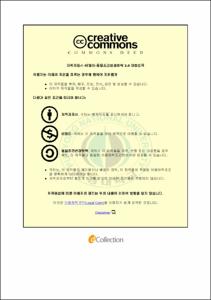In-situ X-ray 회절법을 이용한 과충전 및 과방전 상태의 LiMn2O4-LiNi1/3Co1/3Mn1/3O2 양극 합성체에 관한 연구
- Abstract
- Recently, the lithium ion batteries have been investigated intensively and widely used in energy devices and storage systems. For the lithium ion battery applications, LiMn2O4 spinel have been investigated as one of the promising material for conventional cathode due to its low cost, low toxicity, fast kinetics and remarkable safety properties. The new layered LiNi1/3Co1/3Mn1/3O2 cathode material is another good candidate due to its low cost, high specific capacity, and good thermal stability properties. There are many reports about thermal properties of LiMn2O4 and LiNi1/3Co1/3Mn1/3O2 cathode material using various techniques such as differential scanning calorimetry (DSC), thermogravimetry/differential thermal analysis (TG/DTA), accelerated rate calorimetry (ARC), and micro-calorimetry. However, not much information on the structural changes of over-charged or over-discharged LiMn2O4 and LiNi1/3Co1/3Mn1/3O2 cathode has been reported. In the case of LiNi1/3Co1/3Mn1/3O2 cathode materials, at over-charged states (highly delithiated), the reduction of Ni4+ releases oxygen that can accelerate severe thermal runaway by reacting with the electrolyte before leading to catastrophic failure of the battery. In this paper, the results of the structural change
studies of the over-charged or over-discharged LiMn2O4 – LiNi1/3Co1/3Mn1/3O2 composite cathode during cycling using in situ synchrotron based XRD technique are reported. These results provide valuable guidance for the structural change behavior and different contributions of each individual component. Additionally, helpful information in redesigning and optimizing the LiMn2O4 and LiNi1/3Co1/3Mn1/3O2 composite cathode will be provided for Li-ion battery research.
- Issued Date
- 2014
- Awarded Date
- 2014. 2
- Type
- Dissertation
- Publisher
- 부경대학교
- Affiliation
- 대학원
- Department
- 대학원 재료공학과
- Advisor
- 최희락
- Table Of Contents
- Abstract
List of Figures
1. 서론 1
2. 이론적 배경 3
2.1 리튬이차전지
2.1.1 리튬이차전지의 역사
2.1.2 리튬이자천지의 원리
2.1.3 리튬이차전지의 특성
2.2 리튬이차전지의 구성
2.2.1 양극활물질
2.2.2 음극활물질
2.2.3 전해질
3. 실험방법 11
3.1 전극 제조
3.1.1 LiMn2O4전극 및 Li(Ni1/3Mn1/3Co1/3)O2 전극 제조
3.1.2 LiMn2O4-Li(Ni1/3Mn1/3Co1/3)O2 합성체 제조
3.2 전기화학적특성 실험
3.2.1 전지조립
3.2.2 충-방전 실험
3.2.3 in-situ 충-방전 X-ray diffraction
3.2.4 Time resolved X-ray diffraction
4. 실험 결과 분석 및 고찰 20
4.1 과충전시 전기화학적 특성
4.1.1 LiMn2O4 및 Li(Ni1/3Mn1/3Co1/3)O2의 특성
4.1.2 LiMn2O4-Li(Ni1/3Mn1/3Co1/3)O2 합성체의 특성
4.2 과방전시 전기화학적 특성
4.2.1 LiMn2O4 및 Li(Ni1/3Mn1/3Co1/3)O2의 특성
4.2.2 LiMn2O4-Li(Ni1/3Mn1/3Co1/3)O2 합성체의 특성
4.2.3 과방전에서의 격자상수 변화
4.3 과충전 및 과방전에서의 열적안정성 실험
4.3.1 4.8V 과충전상태의 열적안정성 실험
4.3.2 1V 과방전상태의 양극활물질 열적안정성 실험
5 결론 46
참고문헌
- Degree
- Master
- Files in This Item:
-
-
Download
 3O2 양극 합성체에 관한 연구.pdf
기타 데이터 / 2.66 MB / Adobe PDF
3O2 양극 합성체에 관한 연구.pdf
기타 데이터 / 2.66 MB / Adobe PDF
-
Items in Repository are protected by copyright, with all rights reserved, unless otherwise indicated.